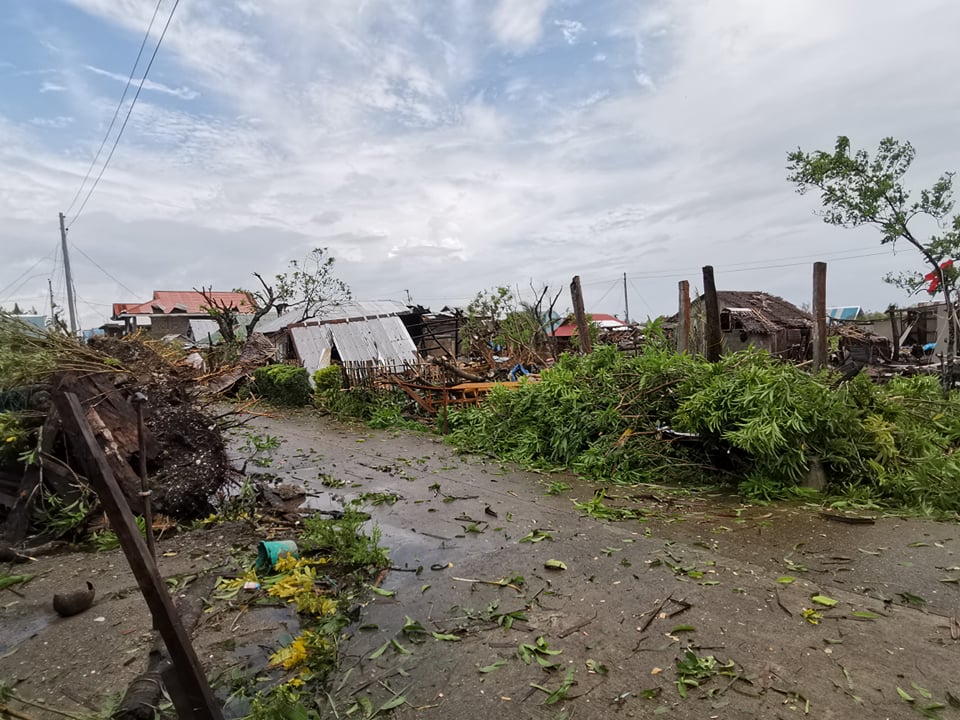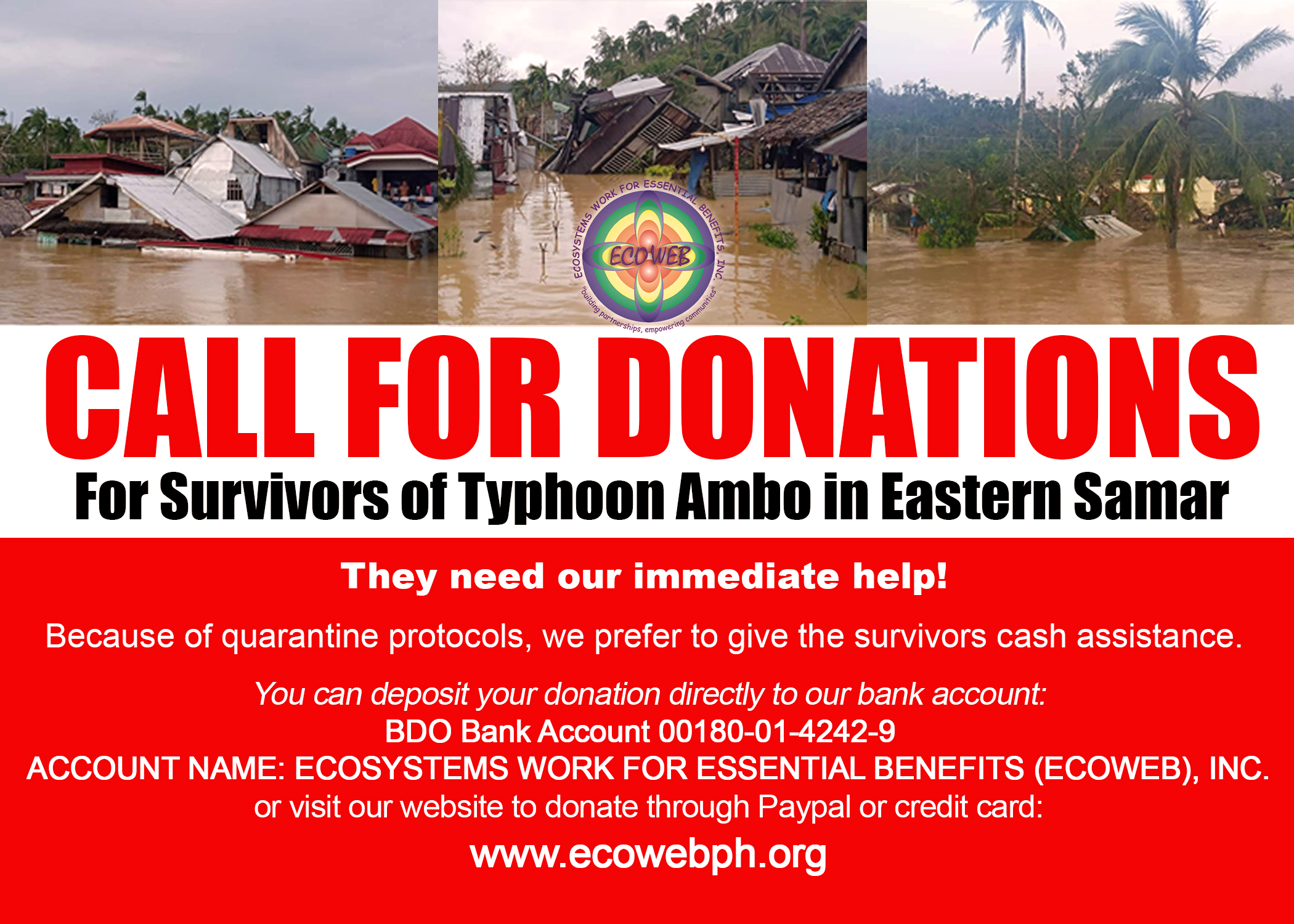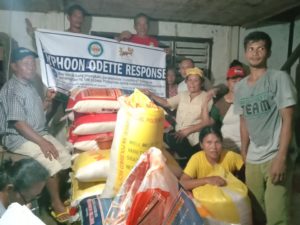—“This speaker system helped us a lot. We don’t have to go from house to house to warn the people of the incoming calamity. We use this to inform the people to get ready for an evacuation.” -Marcelo Placiente, Barangay Chairman, Sabang, Oras, Eastern Samar
This is how Barangay Sabang last out Typhoon Ambo (international name: Vongfong) on the morning of May 14, 2020. The category 3 storm with winds up to 120 mph made landfall on the town of San Policarpio, destroying livelihood and infrastructures.
Initial assessment on damages
Forty percent of houses and other infrastructure in Oras, which is the next town in the southwest of San Policarpio, were totally damaged. Electricity and communication were down. Water supply in areas under flood is contaminated and non-functional. Only the shallow tube wells in the Poblacion remained operational.
Agricultural products and production areas were also severely damaged. Coconut trees and high-value crops were severely damaged. The local government estimated 10 million worth of damage in agriculture and around 20 million damages on fisheries facilities.
In San Policarpio, electricity and communication were totally down. Fifty percent (50%) of all schools and around 80% of covered courts were damaged. The typhoon also partially damaged 2,650 houses and totally damaged 750. High-Value Crops on its vegetative and productive stage with the estimated affected area of 40.87 hectares were totally damaged. Fruit trees under the productive stage in around 40 hectares were severely damaged but still have a 50% chance of recovery. Root crops both newly planted and in productive stage with the estimated affected area of 41.5 hectares were also totally damaged. 23 seaweed farmers were affected as the typhoon destroyed seaweeds farms, fish coral and perrulus cages.

Initial response
Both municipalities implemented pre-emptive evacuation measures in high-risk areas. They disseminated information and warning. During the calamity, the affected communities were forcibly evacuated to safer ground. After the calamity, concerned agencies conducted a rapid assessment, cleaned and removed debris, and distributed 439 shelter kits to barangays which are under the ICBDRR project implanted by EcoWEB. These shelter kits contain trapal or laminated sacks.
Read also San Policarpio LGU’s post
Initial needs assessment
Based on the initial needs assessment of concerned agencies and of EcoWEB, the survivors need medicines, disinfectants, food assistance, tarpaulin, GI sheets, nails, and other carpentry materials and tools. To jumpstart their livelihood, they need new pump boats, rice seedlings, HVC seeds, coconut saplings, and chainsaw. They also need cash for their other necessities.

The preparation factor
In 2016, through the funding support of Help Germany, EcoWEB implemented a DRR project with fifteen pilot barangays in the municipalities of San Policarpio, Oras, and Dolores. The project assisted the barangay government units in creating their BDRMMC and crafting their BDRMM plan. The project conducted trainings and distributed needed facilities and equipment.
One of these notable equipment is the chariot, a three-wheel motor vehicle with big cargo space which the barangays used in the evacuation and in cleaning debris left by the typhoon. Another is the public address system which saved the barangays much time in informing the community of an incoming calamity.
The project also constructed a Community Resiliency Center in one of the pilot barangays that served as an evacuation center. Two typhoons had passed and these communities reap the benefits of being prepared.
The recent typhoon Ambo passed without any casualty in these pilot barangays.
Barangay Chairman Marcel Placente could only look back and see how preparation helped them save lives.
EcoWEB is presently mobilizing funds and volunteers to help those who are affected by the typhoon in these pilot barangays.



